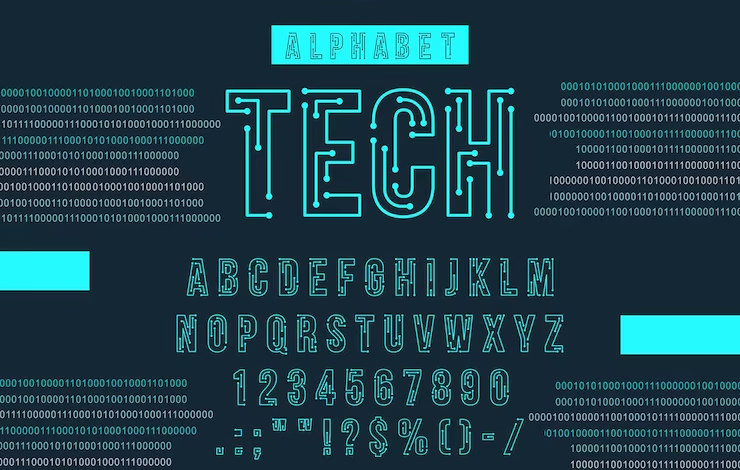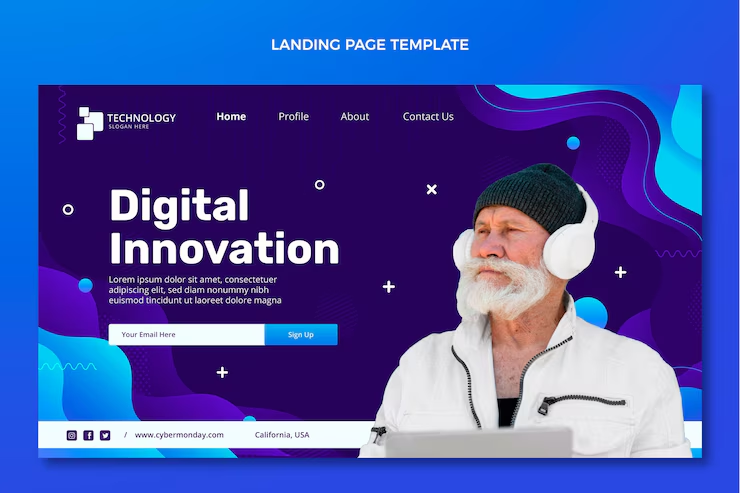Disefont Tech: Revolutionizing Typography in the Digital Age

In the ever-evolving landscape of technology, one area that has seen significant advancements is typography. Among the various innovations in this field, “disefont tech” has emerged as a noteworthy trend. This article will explore what disefont tech is, its applications, and how it is transforming the way we interact with text in the digital realm.
Understanding Disefont Tech
Disefont tech refers to the integration of advanced technology in the creation, manipulation, and application of fonts. It encompasses a range of tools and techniques that allow designers and developers to create unique typographic experiences. This technology is not just about aesthetics; it also focuses on functionality, accessibility, and user experience.
At its core, disefont tech leverages algorithms, artificial intelligence, and machine learning to enhance typography. This means that fonts can be generated, modified, and optimized in ways that were previously unimaginable. The result is a new era of typography that is dynamic, responsive, and tailored to the needs of users.
The Evolution of Typography
To appreciate the significance of disefont tech, it is essential to understand the evolution of typography. Historically, typography has been an art form, with skilled artisans handcrafting letters and typefaces. The invention of the printing press in the 15th century marked a turning point, making it possible to reproduce text on a large scale.
With the advent of computers, typography entered a new phase. Digital fonts became widely available, allowing designers to experiment with type in ways that were not possible with traditional methods. However, the limitations of static fonts soon became apparent. Designers sought more flexibility and creativity, leading to the development of disefont tech.
Key Features of Disefont Tech
Disefont tech offers several key features that set it apart from traditional typography:
1. Dynamic Font Generation
One of the most exciting aspects of disefont tech is the ability to generate dynamic fonts. This means that fonts can change in real-time based on user interactions or environmental factors. For example, a font might adjust its weight or style depending on the device being used or the lighting conditions in a room. This adaptability enhances readability and user engagement.
2. Customization and Personalization
Disefont tech allows for unprecedented levels of customization. Users can create their own fonts or modify existing ones to suit their preferences. This personalization extends to various applications, from social media posts to branding materials. As a result, businesses can create a unique identity that resonates with their target audience.

3. Accessibility Enhancements
Accessibility is a crucial consideration in modern design, and disefont tech addresses this need. By utilizing technology, designers can create fonts that are easier to read for individuals with visual impairments or learning disabilities. Features such as adjustable letter spacing, contrast, and size can be implemented to ensure that text is accessible to all users.
4. Integration with AI and Machine Learning
The integration of artificial intelligence and machine learning into disefont tech has opened up new possibilities for typography. AI algorithms can analyze user behavior and preferences, allowing for the automatic selection of fonts that best suit a particular context. This not only saves time for designers but also enhances the overall user experience.
Applications of Disefont Tech
The applications of disefont tech are vast and varied, impacting numerous industries and sectors. Here are some notable examples:
1. Web Design
In web design, disefont tech is revolutionizing how text is presented. Websites can now feature dynamic fonts that adapt to different screen sizes and resolutions. This ensures that text remains legible and visually appealing, regardless of the device being used. Additionally, the ability to customize fonts allows brands to maintain a consistent identity across their online presence.
2. Mobile Applications
Mobile applications are another area where disefont tech is making waves. With the rise of mobile usage, developers are increasingly focused on creating user-friendly interfaces. Disefont tech enables the creation of fonts that enhance readability on small screens, improving the overall user experience. Furthermore, personalized fonts can be integrated into messaging apps, allowing users to express themselves in unique ways.
3. Advertising and Marketing
In the world of advertising and marketing, first impressions matter. Disefont tech allows brands to create eye-catching advertisements that stand out in a crowded marketplace. By utilizing dynamic and customizable fonts, marketers can craft messages that resonate with their target audience. This level of creativity can lead to increased engagement and conversion rates.
4. Education
In educational settings, disefont tech can play a vital role in enhancing learning experiences. Fonts designed for readability can help students with learning disabilities or those who struggle with traditional text. Additionally, interactive educational materials can incorporate dynamic fonts that change based on the content being presented, making learning more engaging and effective.
The Future of Disefont Tech
As technology continues to advance, the future of disefont tech looks promising. We can expect to see even more innovative applications and enhancements in typography. The integration of augmented reality (AR) and virtual reality (VR) could lead to immersive typographic experiences, where fonts interact with users in three-dimensional spaces. This could revolutionize how we perceive and engage with text, making it an integral part of our digital environments.

Moreover, as machine learning algorithms become more sophisticated, the personalization of fonts will reach new heights. Imagine a world where your device automatically selects the most suitable font based on your mood, preferences, or even the context of your work. This level of customization could significantly enhance user satisfaction and productivity.
Challenges and Considerations
Despite the exciting prospects of disefont tech, there are challenges that need to be addressed. One major concern is the potential for over-customization, which could lead to inconsistency in branding and communication. It is essential for designers and businesses to strike a balance between personalization and maintaining a cohesive identity.
Additionally, as with any technology, there are ethical considerations surrounding accessibility and inclusivity. While disefont tech aims to enhance readability for all users, it is crucial to ensure that these advancements do not inadvertently exclude certain groups. Continuous testing and feedback from diverse user bases will be vital in creating fonts that truly cater to everyone.
Conclusion
Disefont tech represents a significant leap forward in the world of typography. By harnessing the power of technology, designers can create dynamic, personalized, and accessible fonts that enhance user experiences across various platforms. As we move into the future, the potential for disefont tech to transform how we interact with text is immense. Embracing these innovations will not only elevate design standards but also foster a more inclusive digital landscape where typography serves as a bridge between technology and human expression.



